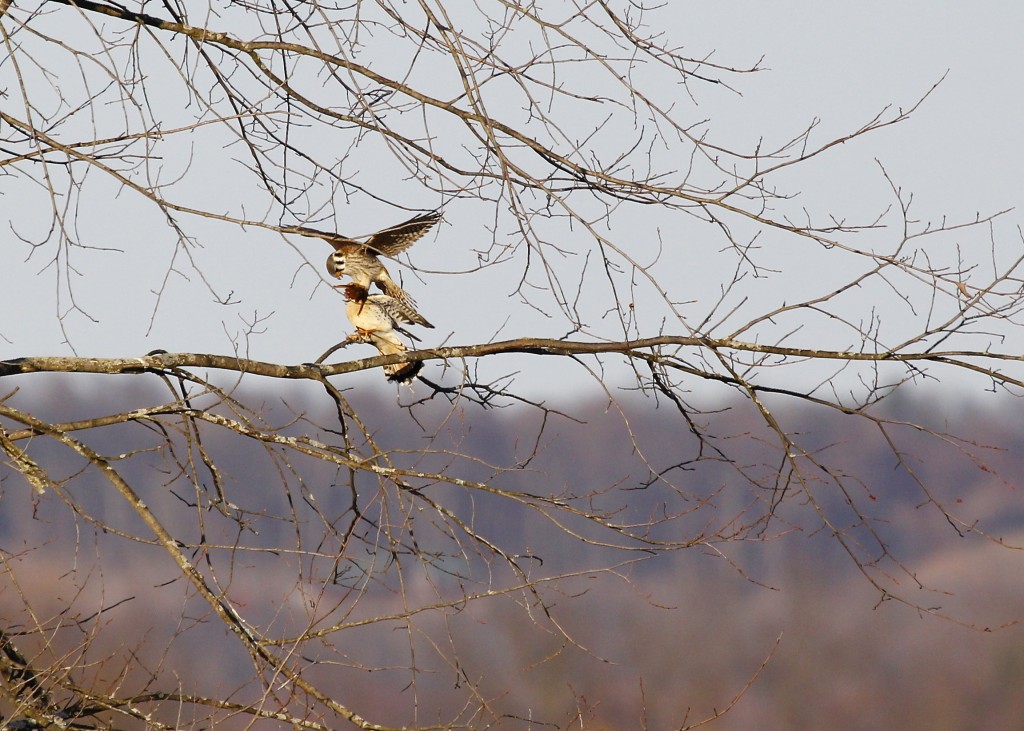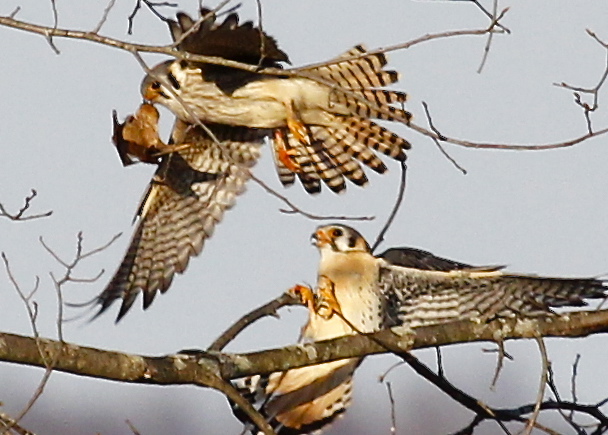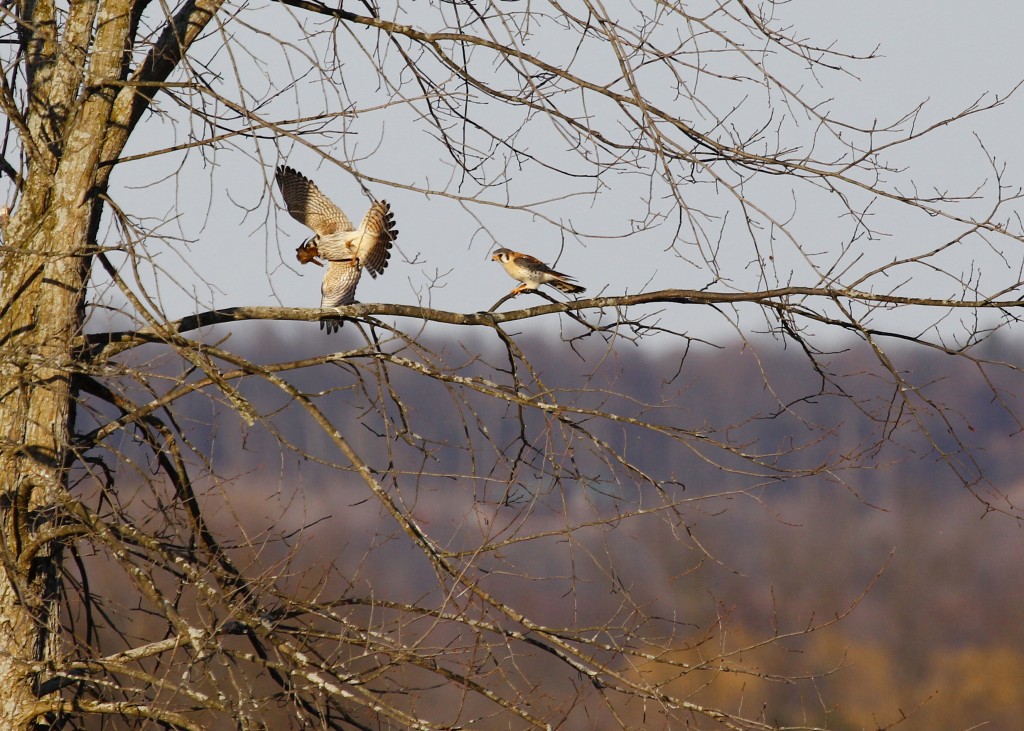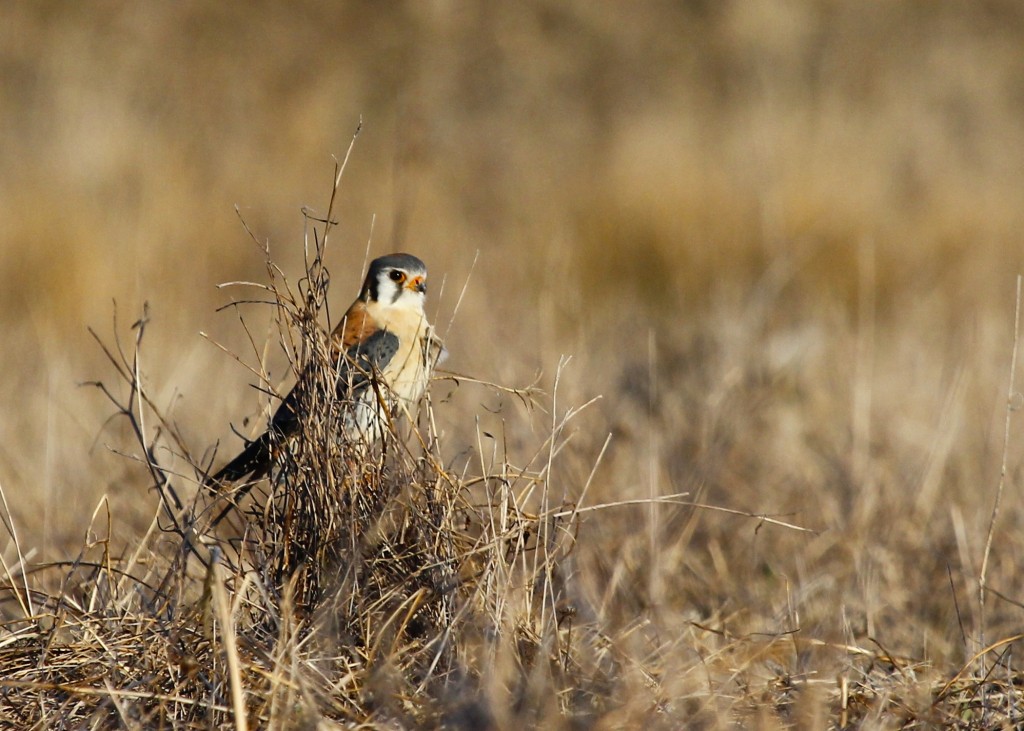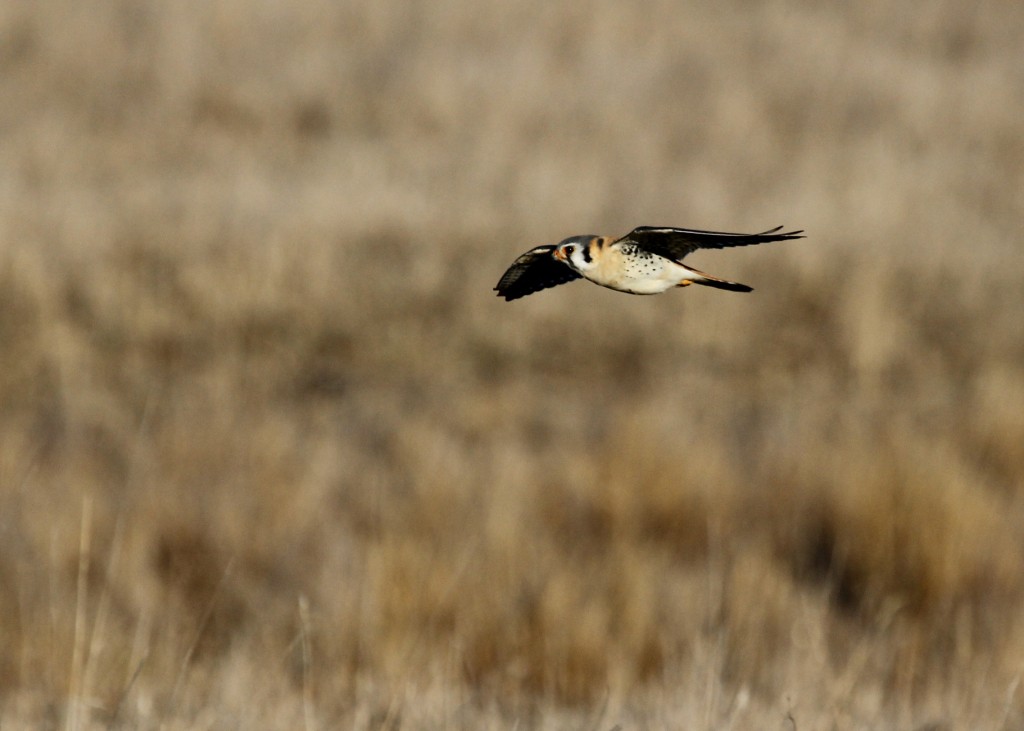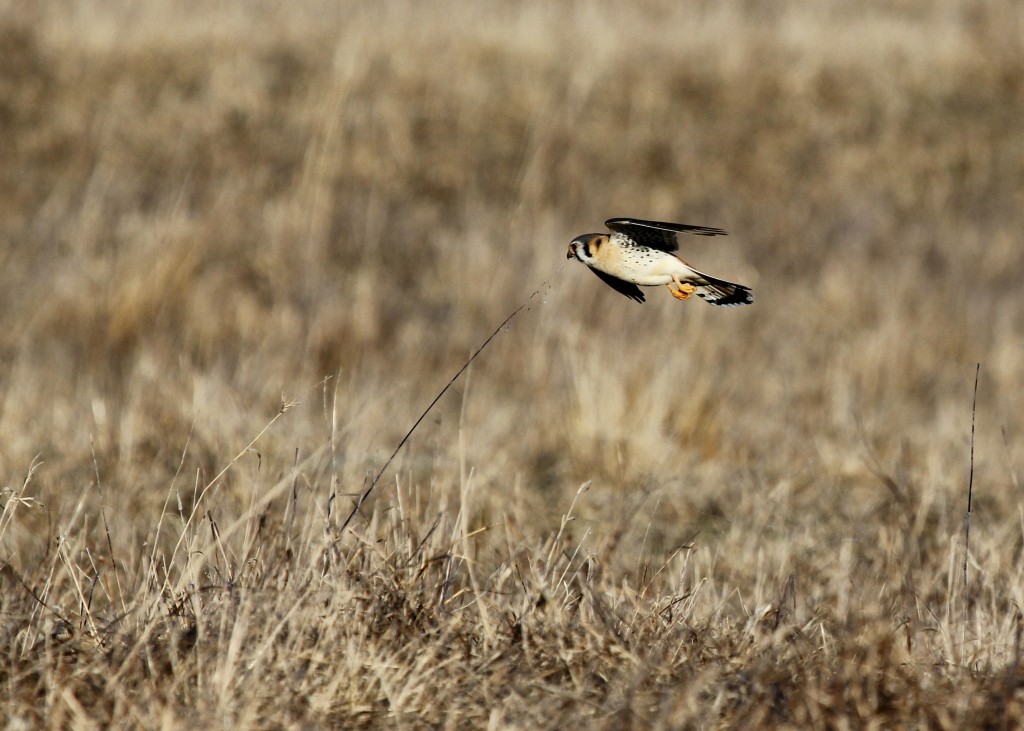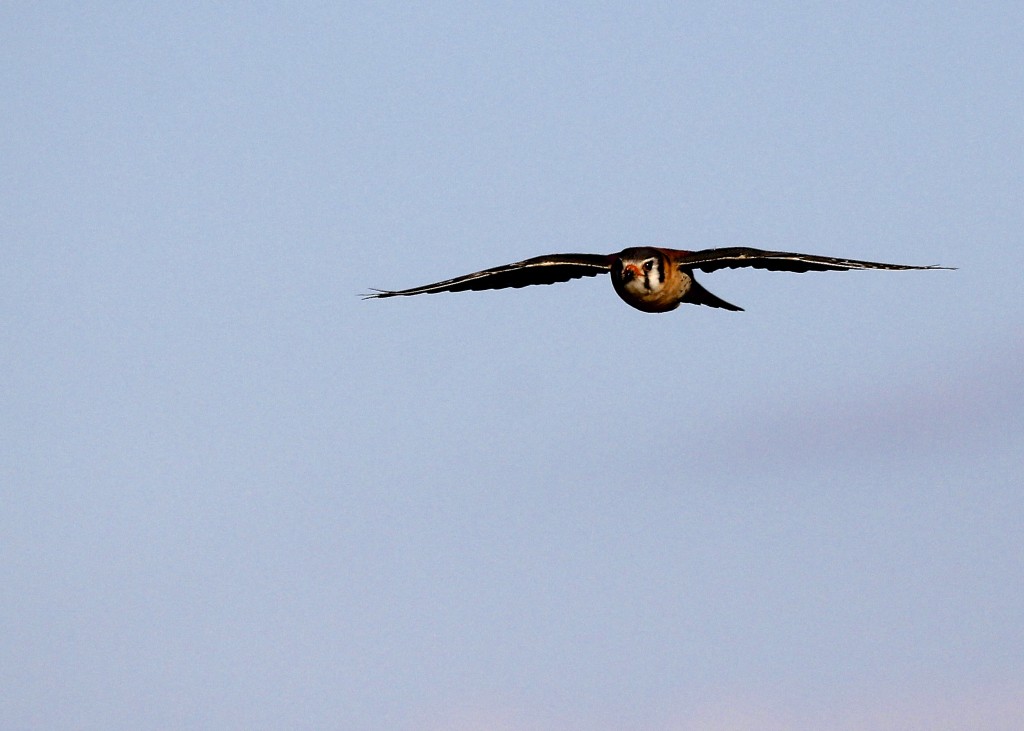Last Friday afternoon at the Shawangunk Grasslands, I had my first real experience trying to photograph American Kestrels for any extended amount of time. I was hidden in the blind closest to the pond where there is a new Kestrel box.
Both birds were perched in a tree near the box when I arrived at the blind. The male left shortly after my arrival and was gone for nearly an hour. During that time the female did not leave her perch, she faced into the strong gusts of wind and preened. When the male came back the two birds took turns going to the box. It is unclear to me what they were doing, maybe they were checking it out to see if it would make a suitable nesting site? I thought maybe they were bringing in nesting materials, but I looked at my photos and I didn’t see either bird carrying any nesting materials. I have since read that American Kestrels do not use any nesting materials.

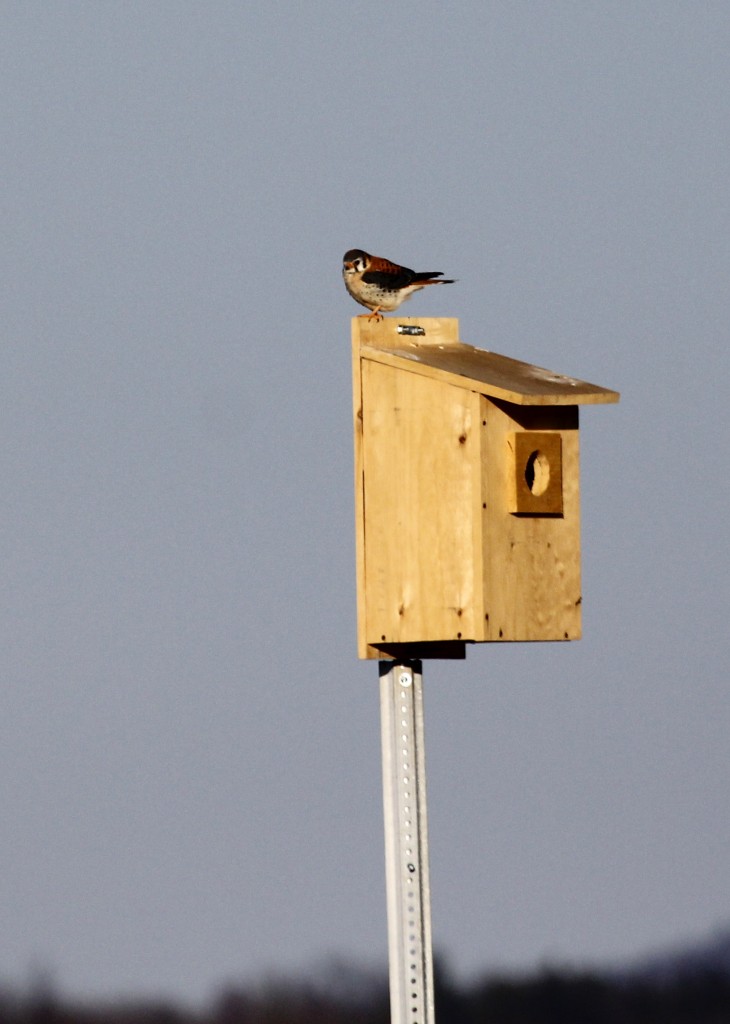
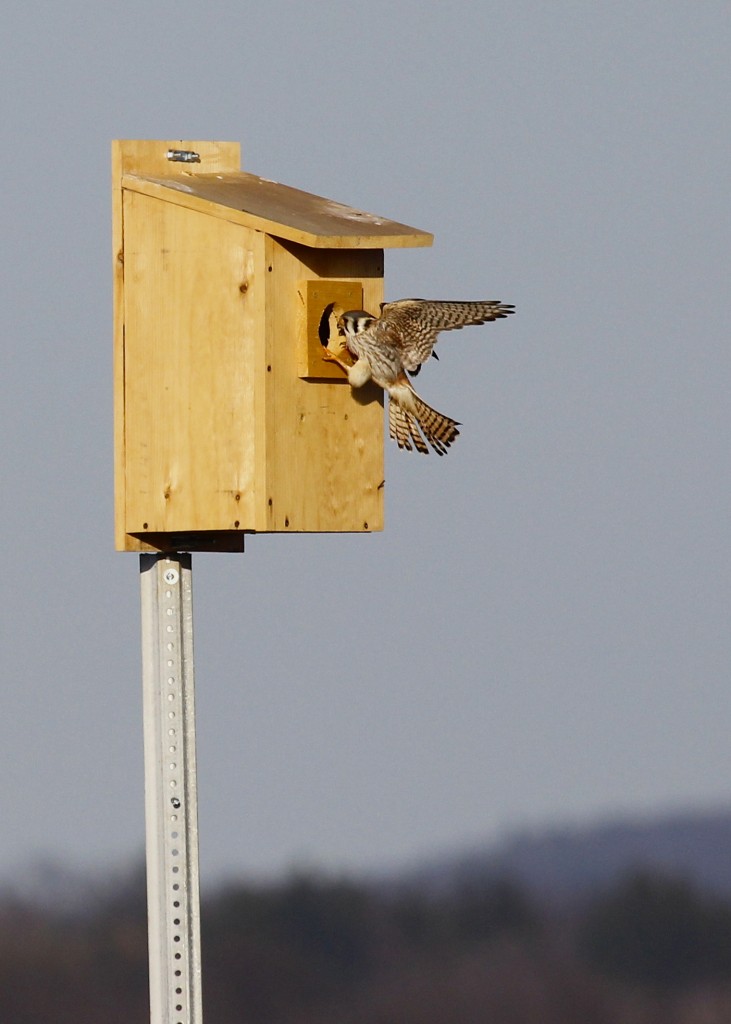
Between visits to the box the male made many visits to a patch of grass very close to the blind. Again, I’m not sure what he was doing; I have discovered in the past that photographing birds makes it much more difficult to observe their behavior. This seemed to be happening a lot on this day.
I was given many good opportunities for flight photos as the male was flying between the tree, the box and the clump of grass right by the blind. I found out quickly that it was much more difficult than tracking Northern Harriers and Short-eared Owls, both of which are much bigger birds. I was learning as I went, and did get a few decent flight photos.
Both birds were perched once again in tree nearest to the blind. The male left again and I lost sight of him. He returned a couple of minutes later and I thought that they were mating as I took photos. What actually had happened was a food exchange, which you can see in the photos below. I read on Hawk Mountain’s website that the male American Kestrel will sometimes bring food the female, in an effort to entice her into a nesting site he has chosen. I could be wrong, but it looks to me like he brought her a bat. I have included a heavily cropped image to show the prey. The female took her meal to a shady branch and I watched her enjoy her meal.
This was all very interesting to witness, and I feel like I have some reading up to do regarding American Kestrels. If anyone has any insights, please comment.
